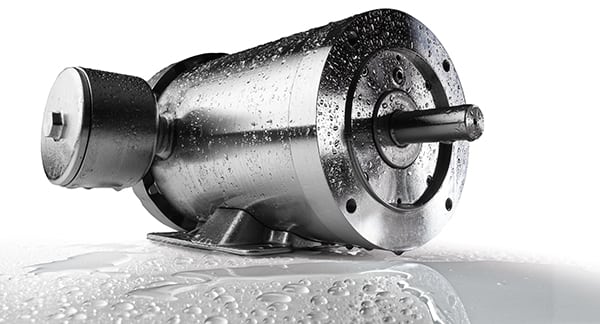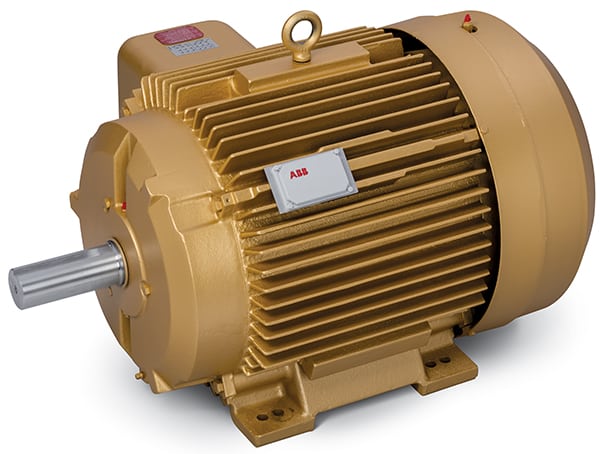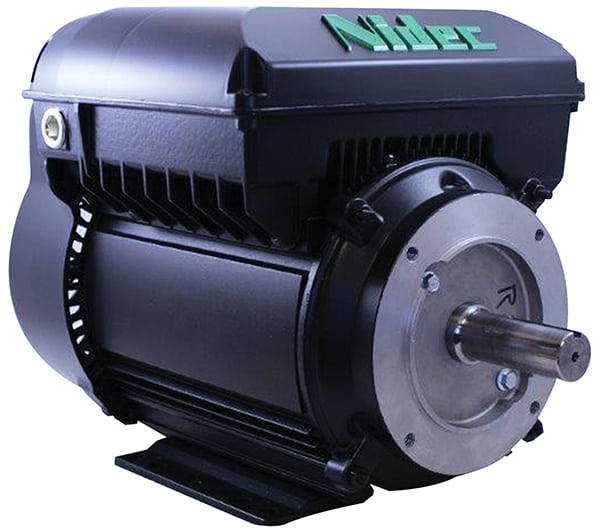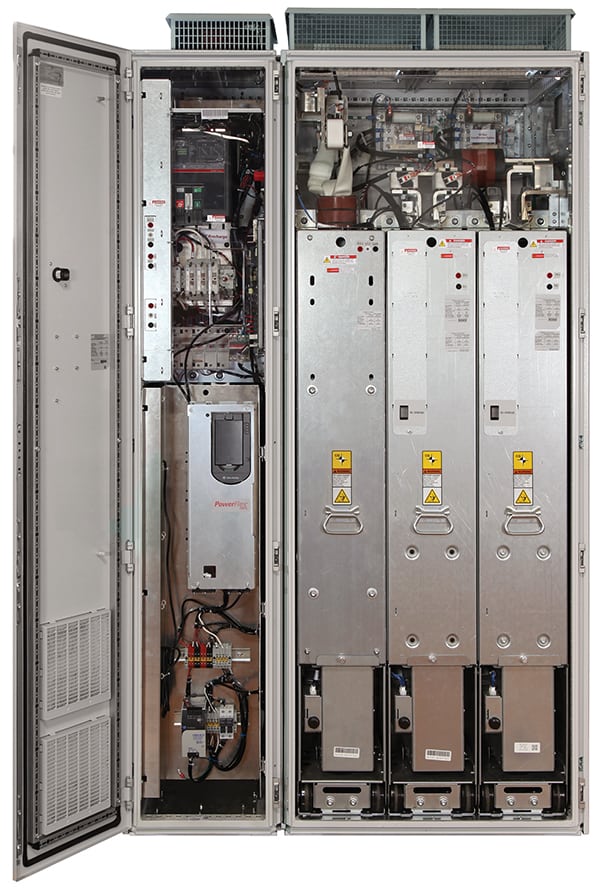New motors and drives provide energy efficiency and reliability in chemical applications
Always on the lookout for ways to reduce downtime and energy costs, chemical processors are turning to advanced motors and drives to help achieve these goals. Sometimes as integrated systems, sometimes not, new motors designed for premium efficiency and reliability and more sophisticated drives are helping processors increase availability and lower cost of ownership. Fortunately, motor and drive suppliers are working hard to provide top-notch equipment with modern features that can withstand the demanding applications found in the chemical processing environment.
“Producers are very aware of energy consumption and seek ways to minimize energy consumption through new information-enabled technologies,” says Sergio Gama, market development director for power control business with Rockwell Automation (Milwaukee, Wis.; www.rockwellautomation.com). “Reliability and plant availability are also important to them. They want to keep the plant running 24/7 and maximize asset utilization, so they want to minimize unplanned downtime by reducing mean time to repair, allowing a quick return to full capacity.”
George Weihrauch, product manager for LV NEMA Motors with Baldor, a member of the ABB Group (Fort Smith, Ark.; www.baldor.com) agrees that these are priorities. “When it comes to motors, processors are beginning to look at the total cost of ownership, which includes reliability and efficiency,” Weihrauch says. “Selecting motors based upon the lowest price is not something chemical processors do anymore. Instead, they look for proven technologies, so as manufacturers, we look at how to make designs more reliable and efficient. We study modes of failure that affect motor life, such as operating temperatures, vibration and things that affect motors like power supply and inverter operation, and look for new materials, design improvements and features that can reduce the modes of failure so the motor will last longer and run more efficiently.”
Drives, too, are being improved to increase reliability and efficiency. “There are typically two reasons to purchase a drive: to reduce energy consumption or improve process control,” says Matti Paaso, Chemical, Oil and Gas segment manager with ABB Group (Cary, N.C.; www.abb.com). “So, processors are starting to realize the value of more efficient motor control methods like vector control over traditional volts-per-hertz control.”
He continues: “And, because chemical plants are typically a high-dollar-value investment, which need to operate 24/7, reliability is important, as a failed drive can shut down a plant’s essential processes and re-start time can be days. Availability of the drive system has become a more prominent concern, as are reduced maintenance intervals and quick and safe recovery from failure situations.”
Designed for reliability & efficiency
As such, providers of equipment wish to incorporate improvements, such as more cost-efficient computational power to improve motor control methods, additional programming features and more intelligence in the drives. Motor designs have also improved to include new materials and encapsulation methods. Further, motor types that were not previously cost effective, such as permanent-magnet motors and synchronous-reluctance motors, are being redesigned and gaining more acceptance in the chemical process industries (CPI) due to energy efficiency benefits and reduced cost of ownership.
Because the chemical industry presents many challenging applications, motor manufacturers are working to design motors that can better withstand the environment, says Chris Medinger, product marketing specialist with Leeson Electric (Grafton, Wis.; www.leeson.com). “Reliability of motors is a great need, for the downtime costs in chemical applications are very expensive. Because processors can’t afford to have downtime in their applications, they need a motor that can stand up to chemicals and washdowns,” he says. So, Leeson went to work and re-engineered their design to provide a liquid-proof motor, called the Extreme Duck Ultra (Figure 1). The motor’s design ensures that liquids don’t penetrate the motor in any mounting position via a new encapsulation process with better materials to ensure complete filling of the motors and curing of the epoxy encapsulation.

Figure 1. The Extreme Duck Ultra offers a motor design that ensures that liquids don’t penetrate the motor in any mounting position via a new encapsulation process with better materials to ensure complete filling of the motors and curing of the epoxy encapsulation
Leeson Electric
Another way motor manufacturers are adding reliability is by adding more sophistication. For example, ABB offers an add-on device, the ABB Ability Smart Sensor, says Weihrauch. The device provides remote condition monitoring for low-voltage motors. It attaches to the frame of the motor, without wires, and picks up data on vibration, temperature and other parameters (Figure 2). It uses on-board algorithms and relays information about the motor’s health via a smartphone or over the Internet to a secure server. Weihrauch says this can help reduce motor downtime by up to 70%, extend lifetime by as much as 30% and lower energy use by up to 10%.

Figure 2. The ABB Ability Smart Sensor provides remote condition monitoring for low-voltage motors. It attaches to the frame of the motor, without wires, and picks up data on vibration, temperature and other parameters
The ABB Group
“The device has the ability to look at how the motor is used and provide meaningful information on motor condition and performance,” he says. “This enables users to plan maintenance according to actual needs rather than on the basis of time intervals or operating hours and allows them to see changes in motor performance that indicate a problem and address it before shutdown, thus enhancing reliability.”
Drives, too, are receiving updates. For example, ABB’s ACS880 drive is an all-compatible, low-voltage drive that uses Direct Torque Control, which is capable of controlling induction, synchronous and synchronous-reluctance motors, and helps simplify operation, provide better control of the process and optimize energy efficiency. Its “common drives architecture” features the same control panel, parameter menu structure, universal accessories and engineering tools. The control panel is equipped with an intuitive control display, enabling easy navigation. Flexible data visualizations including bar charts, histograms and trend graphs help users analyze processes, says Paaso. “This drive allows operators to learn one drive and use it multiple times, while controlling motors more accurately to reduce energy consumption, and it is compatible with higher efficiency motor technologies such as synchronized and synchronous reluctance motors.”
Improving through integration
Offerings of integrated systems are another way equipment providers are helping processors increase efficiency and reliability. “Since processors are looking to minimize downtime and maximize system efficiency, one of the big pushes right now is integrating motors and drives,” says Patrick Hogg, application engineering manager for industrial horsepower applications with Nidec Motor Corp. (St. Louis, Mo.; www.nidec-motor.com). “Instead of having a separate motor and drive, you have a motor with a drive that’s integrated and the drive is characterized to run specifically with that motor.”
The benefits of this type of integration, he says, are that the motor and drive are tested and tuned together, which saves steps during installation and ensures compatibility. For example, Nidec offers its ACCU-Series product line, which allows users to match a U.S. Motors brand inverter duty motor with a Nidec drive. These products are solution driven and are designed to be used together as a system.
Often, these systems are available with advanced motor technologies to provide further efficiencies, says Hogg. For instance, a 3–10-hp electronically commutated motor with an IE4 (Super Premium efficiency) rating integrated with a tuned variable-frequency drive (VFD) is part of the ACCU-Series line of variable speed products (Figure 3). The integrated motor and drive was designed with ferrite magnets rather than rare earth magnets for more consistent pricing and cost structure. The brushless permanent-magnet motor and drive have an integrated user interface that allows for easy setup. The product is simpler than a modular approach, and it reduces costs and lead-time by eliminating cabling between motor and separate control. It also reduces electromagnetic interference and corona, which can result in power loss and interfere with performance.

Figure 3. This 3–10-hp electronically commutated motor with an IE4 rating integrated with a tuned variable frequency drive is part of the ACCU-Series line of variable speed products. The brushless permanent magnet motor and drive have an integrated user interface that allows for easy setup Nidec Motor Rockwell Automation
Similarly, Rich Mintz, low-voltage motors and drives marketing manager with Siemens (Alpharetta, Ga.; www.siemens.com), says Siemens uses advanced manufacturing and design to provide a synchronous reluctance motor that uses less material, provides better efficiencies and was designed to be integrated with a drive. “Synchronous reluctance technology allows the motor to be lighter and have better efficiency, and combining it with a VFD makes it more efficient than the advanced design alone,” says Mintz.
The company’s Simotics reluctance motors are precisely harmonized and coordinated with Sinamics converters to create a Siemens integrated synchronous-reluctance drive system. It offers the advantages of well-proven standard platforms and links these with energy-efficient synchronous-reluctance motor technology, he says. “The transition from an induction motor with converter to a synchronous-reluctance drive system represents a small step, however, the impact is enormous: The high efficiency ensures minimum operating costs and high productivity.”
Taking it a step further, Rockwell Automation’s Gama says the ability to integrate not just the motor and drive, but all the motor control and sensing devices into the control system, allows users to collect and use diagnostic information from all of these devices. “We are coming to the point where processors realize there is a lot of data they haven’t been using. So, many are interested in taking a holistic approach and using analytical tools to look at the data from the process, the plant and even data from other plants within the enterprise to draw correlations between performance in one plant and another in an effort to understand what’s working well and what’s not and then using that information to achieve better overall performance throughout the enterprise,” he says. “We call this the ‘Connected Enterprise Approach’.”
Gordon Bordelon, chemical industry leader with Rockwell Automation, continues: “Processors increase reliability by being able to get data and do predictive maintenance before there’s a potential process upset, so it comes down to getting enabled devices — the smarts on the motor control centers, the smarts of the drives — and sharing that data, along with process data, to infer knowledge about the process and make decisions in the most efficient manner.”
One of the ways to begin deploying this type of holistic approach, he says, is to bring smart devices, particularly those centered around drives and motor controls, back to the distributed control system (DCS). Rockwell’s PowerFlex 755T drives were designed to help with this (Figure 4). The drives, which provide harmonic mitigation, regeneration and common bus solutions, can reduce energy costs, add flexibility and increase productivity. The drives feature predictive diagnostics and maintenance settings that monitor drive and motor operating conditions to help analyze system health. Gama says they also offer adaptive control to accommodate changes in load and to compensate for those changes so there’s no impact on availability. “When there’s an issue, the drive is sophisticated enough to adjust to the unfavorable conditions, but it also provides communication that it is working under stressful conditions so that something can be done to avoid plant downtime. Users can make decisions based upon this intelligence and information.”

Figure 4. PowerFlex 755T drives provide harmonic mitigation, regeneration and common bus solutions to reduce energy costs, add flexibility and increase productivity. The drives feature predictive diagnostics and maintenance settings that monitor drive and motor operating conditions to help analyze system health
Rockwell Automation
Clearly motors and drives are adapting to the demands of the chemical industry via improved designs and more sophistication, which will help increase reliability and efficiency, ultimately providing lower lifetime equipment costs and better bottom lines.
Joy LePree